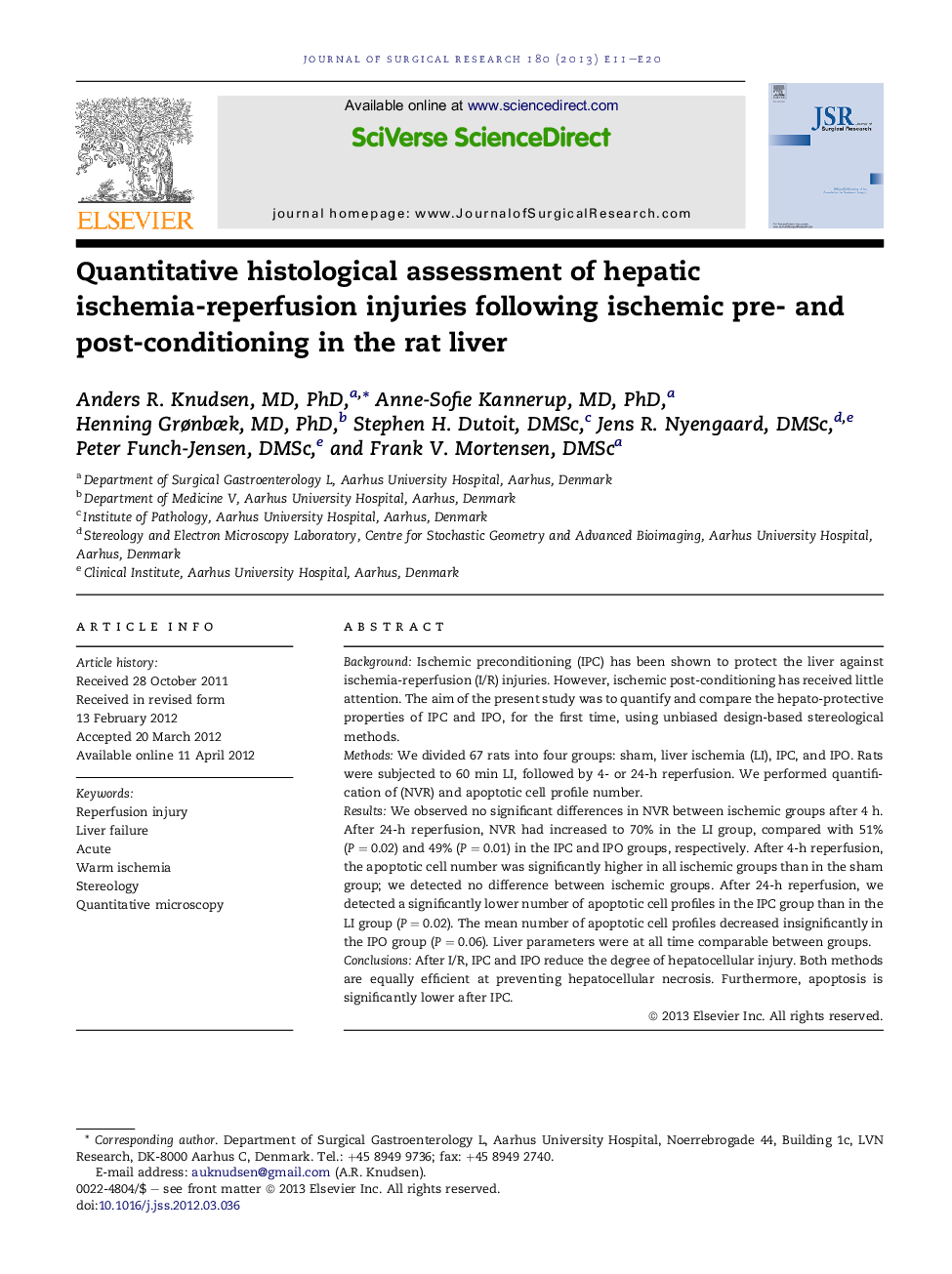| Article ID | Journal | Published Year | Pages | File Type |
|---|---|---|---|---|
| 4301173 | Journal of Surgical Research | 2013 | 10 Pages |
BackgroundIschemic preconditioning (IPC) has been shown to protect the liver against ischemia-reperfusion (I/R) injuries. However, ischemic post-conditioning has received little attention. The aim of the present study was to quantify and compare the hepato-protective properties of IPC and IPO, for the first time, using unbiased design-based stereological methods.MethodsWe divided 67 rats into four groups: sham, liver ischemia (LI), IPC, and IPO. Rats were subjected to 60 min LI, followed by 4- or 24-h reperfusion. We performed quantification of (NVR) and apoptotic cell profile number.ResultsWe observed no significant differences in NVR between ischemic groups after 4 h. After 24-h reperfusion, NVR had increased to 70% in the LI group, compared with 51% (P = 0.02) and 49% (P = 0.01) in the IPC and IPO groups, respectively. After 4-h reperfusion, the apoptotic cell number was significantly higher in all ischemic groups than in the sham group; we detected no difference between ischemic groups. After 24-h reperfusion, we detected a significantly lower number of apoptotic cell profiles in the IPC group than in the LI group (P = 0.02). The mean number of apoptotic cell profiles decreased insignificantly in the IPO group (P = 0.06). Liver parameters were at all time comparable between groups.ConclusionsAfter I/R, IPC and IPO reduce the degree of hepatocellular injury. Both methods are equally efficient at preventing hepatocellular necrosis. Furthermore, apoptosis is significantly lower after IPC.
